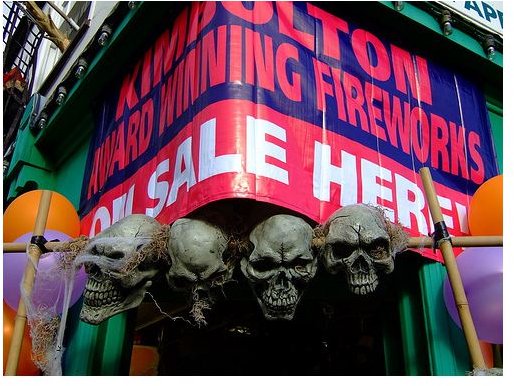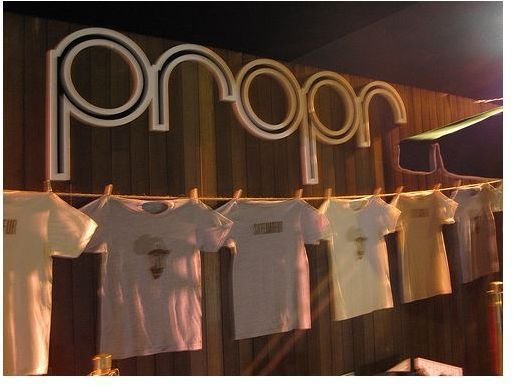Crucial Factors Determining How to Run a Retail Store
Why Run a Retail Store?
The U.S. Census Bureau estimates retail industry sales in the U.S. at $4.48 trillion in 2007. This makes many entrepreneurs eager to enter the industry, looking for a lucrative share of this pie.
The basis of any retail establishment is the store owner sourcing merchandise at low prices and customers buying such merchandise at a higher price that more than covers the store’s overheads. The job of the store owner is to attract customers to the store and entice them to buy the merchandise, and success depends on the ten key factors of location, niche, merchandise, inventory, display, pricing strategy, sales staff, advertisements, organization and control, and periodic review.
1. Location
Location is the most critical factor in the retail industry, and this factor alone can determine the success or failure of a retail store. A retail store selling the correct products at the correct location need not go much further to generate sales. Very often, the premium for such a good location comes back within a few months owing to more sales with minimal advertising.
A correct location could mean a monopoly setting, with no other store in the vicinity selling similar products, or a prime shopping location guaranteed to attract many footfalls. Conversely, selling the best of merchandise at the lowest price would still not guarantee sales if the location of the shop is not suitable for business.
2. Niche
A retail store can stock any type of merchandise, but usually those stores that identifies a niche category and offers merchandise suitable to the location stand a better chance of success. A good niche usually ensures a dedicate client base.
A retail grocery store in a residential area with no competing stores nearby stands a good chance of success, but starting the same store near the vegetable market is not a good business idea. Similarly, starting a shop selling newborn and baby care products near a maternity clinic makes for a good niche suitable for the location, but starting the same business near the vegetable market does not make good business sense.
3. Merchandise
The selection of a suitable niche needs reinforcement in the form of the retail store stocking the maximum possible product choices or variety of products within the niche. A retail clothing shop that sells shirts of all sizes will invariably do well compared to another store that stocks shirts of just one or two of the most common sizes. Customers respond favorably to a retail store that rarely turns away someone asking for a product related to the niche.
Introducing new products on a periodic basis help retain interest of regular customers. A retail store selling toys, for instance will not attract repeat customers if it does not introduce new toys at periodic intervals.
4. Inventory
Establishing an efficient inventory system and maintaining optimal inventory levels is of critical importance in the running of a retail business. Customers who take the trouble to enter a store, only to find the item they want out of stock are least likely to return. Good retail stores identify their fast-moving and most popular items, and devise seamless and systematic ways to replace the sold out items in double-quick time.
Most businesses have a 80-20 pattern, where 80 percent of the sales come through the 20 percent of fast-moving items. Good retail shops ensure adequate stock and rapid replacement or the fast-moving items, but at the same time do not neglect slow-moving items unless such items become dead stock, or in no demand.
5. Display

One of the cardinal time-tested principle for success in the retail industry is good display of merchandise.
Much of the sales in retail shops depend on impulsive buying, when customers enter a shop, become attracted by the merchandise on display and make a purchase. Unless the shop displays all the merchandise in an eye-catching and attractive manner, it looses out on such revenue. Even customers who enter the shop pre-determined to buy a specific product are likely to make the purchase only if the product is displayed in a good condition. Merchandise not displayed, displayed shabbily, or in an untidy manner is as good as not having stock of that merchandise.
Displaying only crisp merchandise, grouping similar items together, displaying impulse-buying items near the cash counter and use of attractive posters and banners to highlight special offers are some of the fundamental time-tested display rules.
6. Pricing Strategy
The pricing strategy of a retail store depends on the merchandise. The store can afford to charge premium on unique merchandise not available elsewhere whereas the store would probably have to offer discounts or initiate special pricing strategies to entice customers purchase commonly available merchandise.
An important pricing related strategy is special offers. Most retail shops offer seasonal discounts and run special promotional offers on certain products from time to time. Such special pricing strategies attract customers and more than make up for the discount offered through more volumes or by customers buying other high margin items along with the discounted items. Special offers are also a good way to sell off slow-moving or dead stock and use the money raised to buy fresh stock of fast-moving merchandise.
7. Sales Staff
Retail stores are a part of the traditional brick and mortar establishment where the business model is sales over the counter based on face-to-face interactions. Success in such a set-up depends largely on the efficiency and commitment of the sales staff. The first consideration is ensuring adequate number of sales staff, for an ignored customer is an irritated customer, unlikely to return.
Entrepreneurs seeking ways on how to run a retail store also need to train their sales staff on customer relations and on product knowledge. Such training is an important, yet often underestimated part of running a retail shop.The shop staff plays a crucial role in shop operations by introducing various products to the customers, explaining the technical specifications and utility of the product, making the customer aware of special offers, clarifying doubts and finally persuading vacillating customers make up their minds. Customers who encounters an indifferent or rude sales staff are sure to take their business elsewhere.
8. Advertisements
All retail businesses need some form of advertisement to attract customers. The type of advertisement and the frequency depends on the nature of the merchandise and the store location, but the best advertisement is a top quality product at a reasonable price and a satisfied customer. Retail shops that delight customers through good products at reasonable prices will not have to spend much money on media ads.
Businesses would also do well to tap the power of internet, especially social networking as an effective advertising medium. A good advertising campaign needs to aim at creating visibility, both online and offline through a variety of possible interventions. Some such interventions include engaging in community programs, exploiting all free advertisement sources, maximizing media coverage, reaching out through promotional events and offers, starting a website and blog, and so on.
9. Organization and Control
The hallmark of a successful retail store it its efficiency in operations and attention to details. Good rack arrangement, good lighting, prompt repairs, regular cleaning and maintenance, all give the impression of a well-organized and thriving establishment. Attention to small details such as good quality carry-bag, a seamless billing system and the like also create a favorable impression that places the retail shop in a good stead.
Good control in the form of an efficient accounting and inventory system, good human resources polices and other similar considerations, even though not directly visible to the customers again have a positive spill on the shop floor.
10. Periodic Review

Retail shop owners would do well to review their establishment periodically. Deploying mystery shoppers provide valuable insight on the adequacy and skills, or lack of it, amongst the sales staff, the effectiveness of the display, and other crucial factors.
Another good way of making a review is through benchmarking. A review of the competitor’s new product range and pricing strategy enables the shop owner to make necessary changes. Benchmarking can also be internal, such as comparing the present display, layout, and other factors with the previous ones.
Such a program of continuous review and improvement is the sure key to success and answers the question: “How to Run a Retail Store?”
References
-
Image Credit:
- Page 1: Geograph.org.uk/John Grayson under CC 2.0 license
- Page 2: flickr.com/OxOx under CC 2.0 license
- Page 3: flickr.com/theDeliciousLIfe under CC 2.0 license <* This article is a reflection of the author’s experience in managing a retail business
